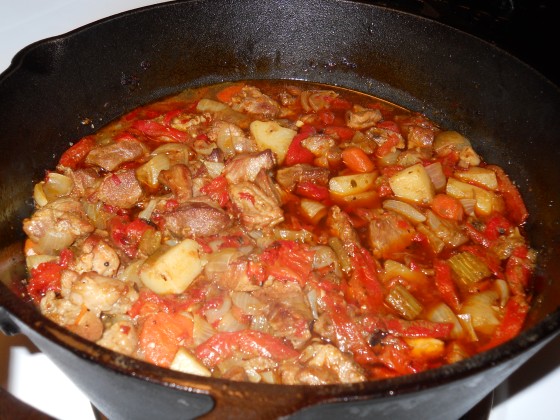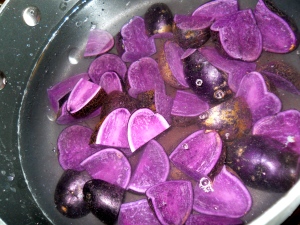I love pork tenderloin. It’s an easy cut of meat to prepare and pairs well with a wide variety of flavors. It’s also possible to cook quickly and still end up with tender, juicy meat. Because there are only two tenderloins per pig, it can be difficult to source this cut from an ethical ranch. That’s why I was delighted to find some at New Seasons, our local grocery market. This recipe was a great way to celebrate!
Although the recipe doesn’t call for toasting the coriander seeds and peppercorns, I know that the flavor of spices is significantly enhanced by taking this extra step. It only takes a few minutes in a hot, dry pan to create fragrant whole spices. I ground the spices with a mortar and pestle, then rubbed them into the dijon mustard on the tenderloin. This recipe follows a pretty standard preparation of browning the meat in a skillet and finishing it in the oven. My one amendment to the recipe is to take the pork out of the oven when the internal temperature reaches 145 F. If you wait until it reaches 155, it will be well done and possibly quite tough.
I served this with a side of kale, which I quickly blanched and then sautéed with onions, garlic, red pepper flakes, salt & pepper, and a generous squeeze of fresh lemon juice just before serving. It felt like a weekday feast, without the fuss. Enjoy!
Coriander-Crusted Pork Tenderloin by Ellie Krieger
Fine Cooking Issue 102













